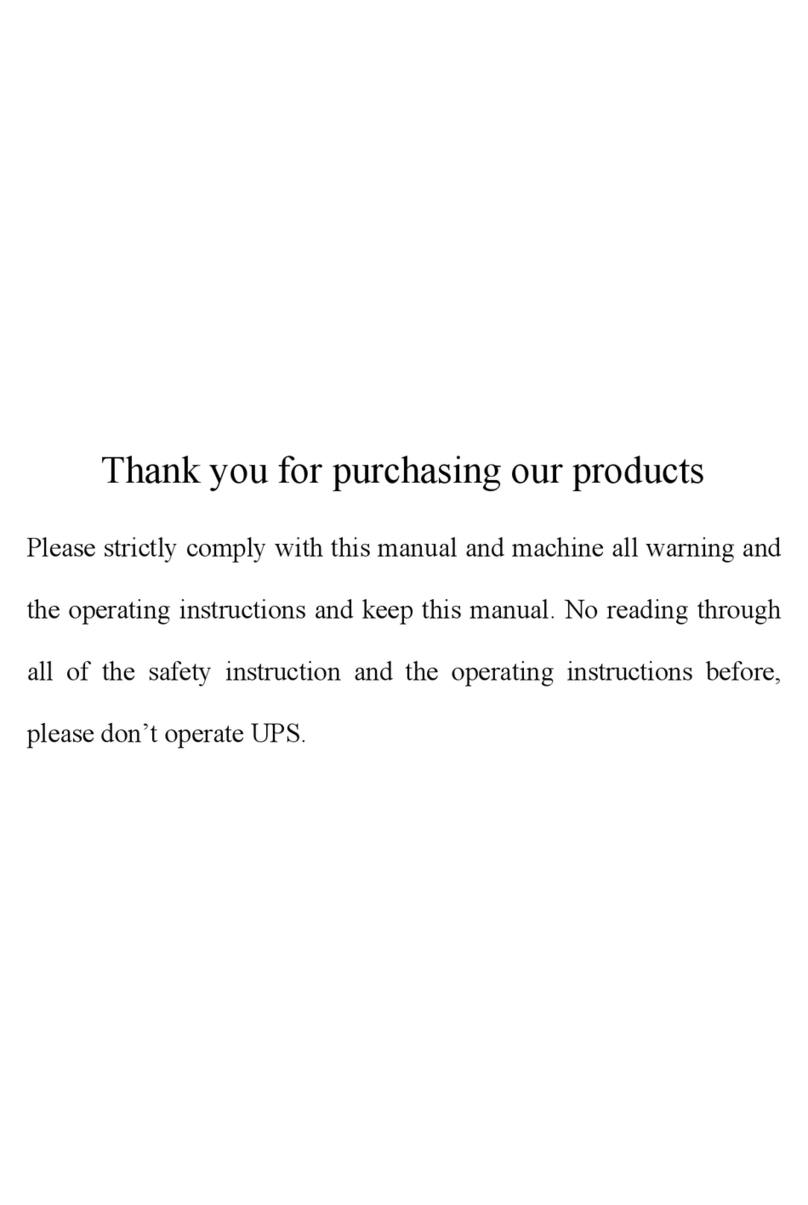
- 1 -
1. Introduction
The Castle On-Line-Series is an uninterruptible power supply
incorporating double-converter technology. It provides perfect protection
specifically for Computer equipment, communication systems and industry
control systems.
The double-converter principle eliminates all mains power
disturbances. A rectifier converts the alternating current from the socket
outlet to direct current. This direct current charges the batteries and
powers the inverter. On the basis of this DC voltage, the inverter generates
a pure sinusoidal AC voltage, which permanently supplies the loads.
Computers and periphery are thus powered entirely by the mains
voltage. In the event of power failure, the maintenance-free batteries
power the inverter. In the event of inverter failure/Overload, UPS transfer
to bypass mode, after the failure/overload remove, UPS transfer to inverter
mode continue supplies the loads.
This manual covers the UPS listed as follows. Please confirm
whether it is the model you intend to purchase by performing a visual
inspection of the Model No. on the rear panel of the UPS.
C6K: Single phase input single phase output, Standard with battery.
C6KS: Single phase input single phase output, can work with external
EBM to get longer backup time.
C10K: Single phase input single phase output, Standard with battery.
C10KS: Single phase input single phase output, can work with external
EBM to get longer backup time.
3C10KS: Three phase input single phase output, can work with external
EBM to get longer backup time.




























